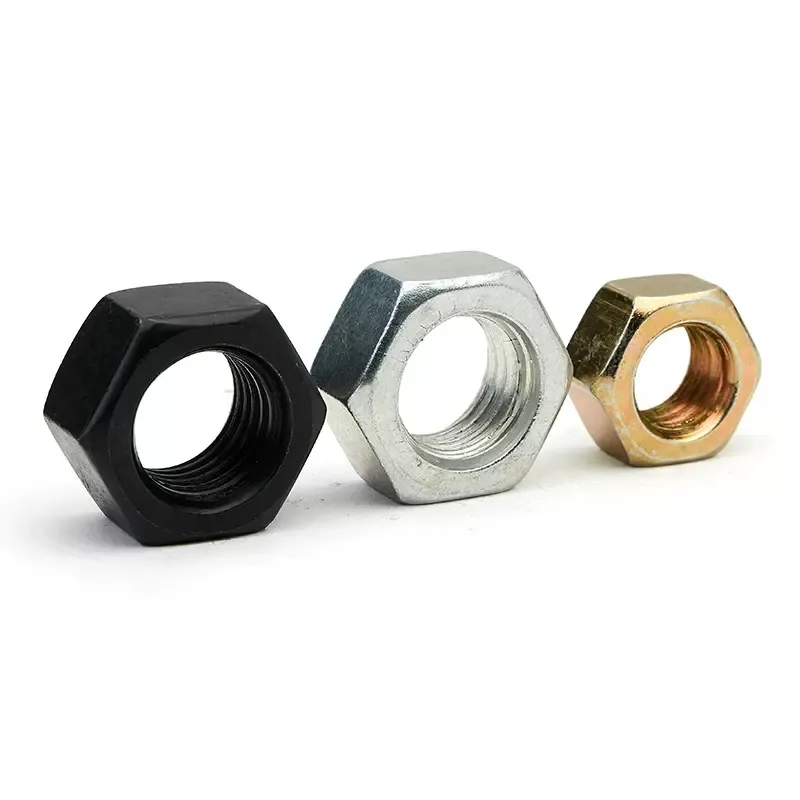

Specifications and Standards for A325 Structural Bolts and Their Applications
ديسمبر . 11, 2024 11:04 Back to list
Specifications and Standards for A325 Structural Bolts and Their Applications
Understanding A325 Bolts Specifications and Applications
Bolts play a critical role in construction and manufacturing, providing essential fastening solutions across a variety of industries. Among the many types of bolts available, the A325 bolt is particularly noteworthy for its robust design and versatile applications. This article will delve into the specifications, uses, and characteristics of A325 bolts, highlighting their importance in structural integrity.
Specifications of A325 Bolts
A325 bolts are specifications governed by the American Institute of Steel Construction (AISC) and ASTM International. They are intended for use in structural applications, particularly in steel connections. The primary distinguishing feature of an A325 bolt is its strength; these bolts are categorized as high-strength bolts, with a minimum yield strength of 120 ksi (kilo-pounds per square inch), which is approximately 827 MPa (megapascals).
There are two primary types of A325 bolts Type 1 and Type 3. Type 1 A325 bolts are made from a medium carbon steel that is heat-treated to achieve the required mechanical properties. These bolts are suitable for environments that do not involve significant exposure to the elements. On the other hand, Type 3 A325 bolts are made from weathering steel, offering enhanced resistance to corrosion. This characteristic makes Type 3 bolts particularly advantageous for outdoor structures or in environments where humidity and moisture levels are high.
Sizes and Dimensions
A325 bolts come in various sizes, typically ranging from ½ inch to 1½ inches in diameter. The length of the bolts can vary significantly, often depending on the specifications of the project. The dimensions of A325 bolts are crucial to ensure that they can generate adequate clamping force when installed, maintaining the integrity of structural joints.
The threads on A325 bolts can also vary, with coarse and fine threads available. The choice of threads largely depends on the specific requirements of the application and the materials being connected. It is essential for engineers and builders to choose the correct dimensions and thread patterns to achieve optimum performance.
Installation and Use
a325 bolt spec

Proper installation of A325 bolts is crucial for safety and performance. Common methods involve the use of a tension control method or a direct tension indicator (DTI). These methods help ensure that bolts are tightened to the specified tension level, which is essential for achieving the desired clamping force.
In applications where the structural integrity is paramount, such as bridges, buildings, and towers, A325 bolts are the preferred choice due to their reliability and strength. They are often employed in steel framing, where they are used to connect beams, columns, and other structural components.
Advantages of A325 Bolts
The popularity of A325 bolts in construction and manufacturing can be attributed to several factors. Firstly, their high-strength characteristics enable them to handle heavy loads and resist shear forces effectively. This strength is essential in maintaining the safety and durability of structures.
Moreover, A325 bolts offer versatility, as they can be used in various materials, including structural steel and certain high-strength materials. Their availability in different grades, sizes, and coatings further enhances their usability across multiple applications.
Additionally, A325 bolts are often galvanized, providing increased resistance to corrosion while maintaining high performance. This property is particularly important in applications exposed to harsh environmental conditions. By choosing the appropriate type, builders can ensure the longevity of their structures while minimizing maintenance costs.
Conclusion
In summary, A325 bolts are high-strength fasteners that offer a reliable solution for various structural applications. Their specifications, including yield strength, size options, and corrosion resistance, make them integral to modern construction practices. Understanding the properties and advantages of A325 bolts assists engineers and contractors in choosing the right fastening solutions, ultimately ensuring the safety and durability of their projects. As construction standards continue to evolve, the A325 bolt remains a cornerstone of structural integrity.
Latest news
-
Best Self Tapping Screws for Drywall - Fast & Secure Installation
NewsJul.31,2025
-
High-Strength Hot Dip Galvanized Bolts-Hebei Longze|Corrosion Resistance&Customization
NewsJul.31,2025
-
Hot Dip Galvanized Bolts-Hebei Longze Metal Products|Corrosion Resistance&High Strength
NewsJul.31,2025
-
Hot Dip Galvanized Bolts-About LongZe|High Strength, Corrosion Resistance
NewsJul.30,2025
-
High-Strength Hot Dip Galvanized Bolts - Hebei Longze | Corrosion Resistance, Customization
NewsJul.30,2025
-
Hot Dip Galvanized Bolts-Hebei Longze|Corrosion Resistance&High Strength
NewsJul.30,2025

